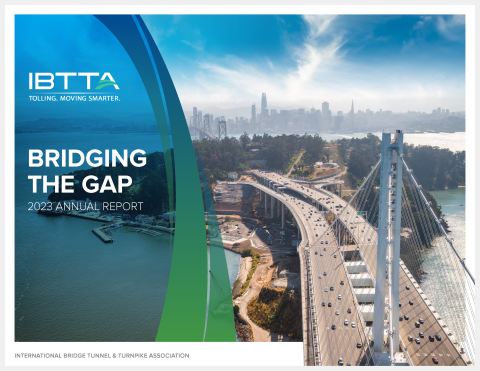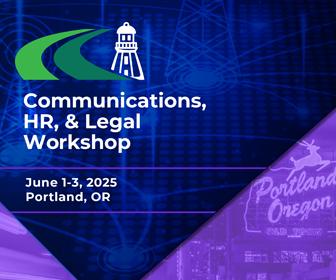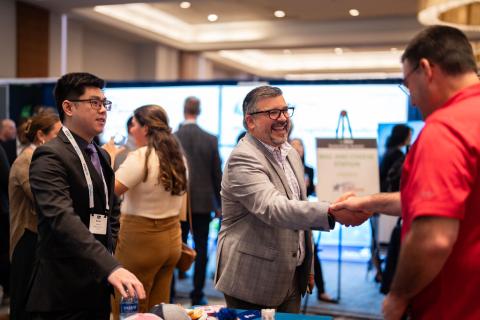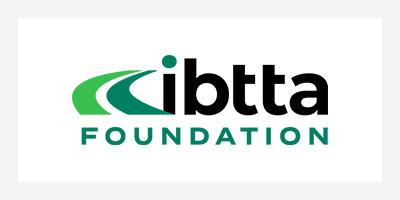- Home
- IBTTA Insights
- IBTTA Board of Directors May 2022 Meeting: Summary of Strategic Discussions
News
IBTTA Board of Directors May 2022 Meeting: Summary of Strategic Discussions


At their meeting on May 14, 2022, in Denver, CO, the IBTTA Board of Directors engaged in two in-depth discussions of strategic issues facing businesses and society today, to understand the implications for tolling and road pricing. The aim of these discussions was for the Board to exchange information and actions currently in place and under development among the IBTTA members and to consider strategic responses and actions that IBTTA may consider in addressing emerging needs of its members. The opening topic explored sustainability and environmental-social-governance (ESG) factors that are becoming commonplace for organizations and investors to evaluate risks and growth opportunities for businesses. A second discussion focused on the realities of today’s workforce and the challenges that organizations face in attracting and retaining employees in demanding and competitive labor markets.
Sustainability and ESG: Considerations for Transportation, Tolling, & Road Pricing
Christine Weydig, from The Port Authority of New York and New Jersey (PANYNJ) and Co-Chair of IBTTA’s Sustainability and Resilience Task Force, provided some background and context, prior to facilitating the Board discussion. Christine is Director of the Office of Environmental and Energy Programs at the Port Authority. She gave a presentation highlighting background information on sustainability, climate action, ESG trends, and environmental justice/climate equity considerations prior to facilitating the Board discussion. Her presentation used business cases, initiatives and plans at the Port Authority, and examples from other regions, to indicate the challenges and responses faced by large transportation operators.
Understanding Sustainability: Sustainability considers the convergence of environmental, social, and economic factors faced by organizations in the course of doing business. Sustainable actions and plans balance all three of these factors. The U.S. Environmental Protection Agency (EPA) explains the principle of environmental sustainability as: “Everything that we need for our survival and well-being depends, either directly or indirectly, on our natural environment. To pursue environmental sustainability is to create and maintain the conditions under which humans and nature can exist in productive harmony to support present and future generations.” Sustainability has been a foundational element of corporate social responsibility (CSR) for some time now. However, the notion of CSR is yielding to a more comprehensive set of environmental-social-governance (ESG) factors that are increasingly used in government policy and investor decision making as indications of successful organizations’ awareness and responsiveness to material risks and growth opportunities.
The Evolution of ESG: For nearly two decades, the basic premise of corporate social responsibility has been evolving towards deeper ESG principles. In the 2020s, corporate boards must demonstrate the ability to understand and oversee ESG issues from climate change to human rights to social issues. This evolution has been characterized by three paradigm shifts for management:
-
From Messaging to Meaning: Use of specific metrics that bring new levels of meaning to impactful story telling.
-
From Silos to Systems: ESG issues involve the intersection of organizational units, functions, and processes, requiring systems-based approaches to management.
-
From Cost Saving to Value Creation: ESG matters are a lever for delivering on an organization’s purpose, driving performance and outcomes.
ESG Trends Today: Global standard-setting bodies, such as the new International Sustainability Standards Board, can establish common baseline disclosure standards consistent across jurisdictions and industries. This means that governments and companies will have to provide credible, achievable near-term milestones toward decarbonization. These emerging responsibilities come at a time of increasing complexity and uncertainty in the economic and geopolitical climate marked by inflationary trends, higher energy costs, and tightening monetary policy, which will sharpen attention to social implications of the transition.
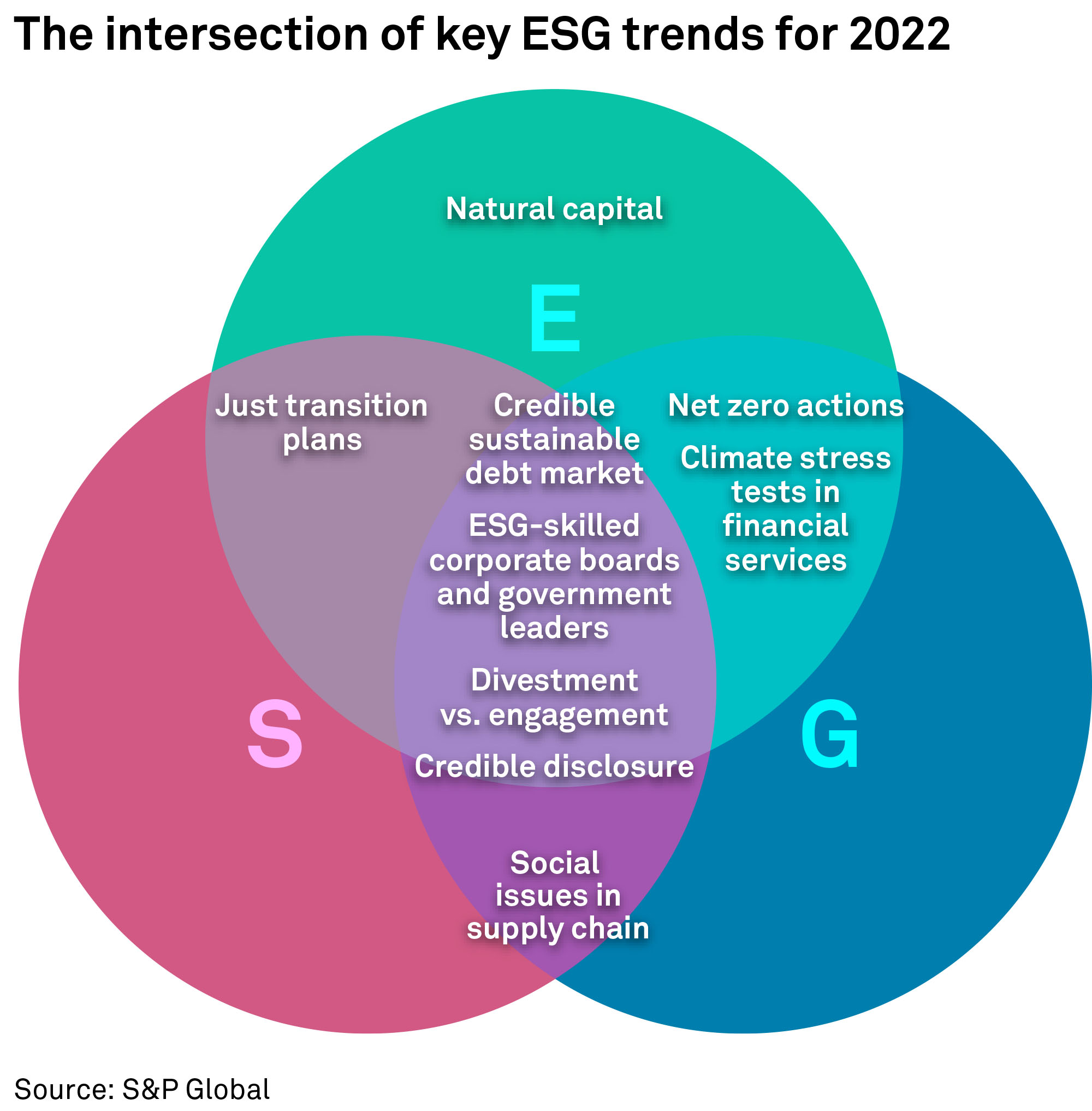
Market and Regulatory Pressures: Today’s investors recognize ESG information as vital to understanding corporate purpose, strategy, and management quality, evidenced by more than doubling of ESG investing in 2021 to $120 billion. The debt market also recognizes ESG matters as a credit risk, which is increasingly factored into rating agency analyses. Demands from investors are coupled with a convergence of US federal government and EU regulatory ESG disclosure standards. The US Securities and Exchange Commission will be requiring public companies to disclose climate-related financial risks and greenhouse-gas emissions in their operations and supply chains. The 2020 EU Taxonomy and 2021 Sustainable Finance Disclosure Regulation require disclosures for financial services focusing on ESG risk and opportunity management.
Environmental Justice and Climate Equity: The US EPA defines environmental justice (EJ) as: “the fair treatment and meaningful involvement of all people regardless of race, color, national origin, or income, with respect to the development, implementation, and enforcement of environmental laws, regulations, and policies. This goal will be achieved when everyone enjoys:
-
the same degree of protection from environmental and health hazards, and
-
equal access to the decision-making process to have a healthy environment in which to live, learn, and work.”
President Biden’s “Secure Environmental Justice and Spur Economic Opportunity” order places a priority on EJ by identifying areas of attention through an enhanced EPA Screening tool (EJSCREEN) and targeting 40% of overall benefits of relevant federal investments to disadvantaged communities through the Justice-40 Initiative. Examples of environmental justice and climate equity in transportation include:
-
Port of Seattle - an inclusive climate action planning provides resources and support to historically underserved near-airport communities, addressing noise mitigation, environmental health, and sustainability.
-
King County, WA - a Strategic Climate Action Plan update integrates climate into all County operations and includes a new Sustainable & Resilient Frontline Communities (SRFC) section focused on climate equity and community-driven policy.
-
San Francisco Climate Action Plan - a framework for zero waste, 80% sustainable trips, and 100% renewable energy to achieve net zero greenhouse gas emissions by 2050 in concert with addressing racial and social equity, public health, economic recovery, resilience, and providing safe and affordable housing to all.
-
PANYNJ EJ Project Guide - an integrated project development and review to identify issues early, streamline processes to focus on significant impacts and mitigations, and ensure inclusive and collaborative public engagement and input.
Sustainability and ESG Discussion Highlights
-
The risks of inaction are being better understood in terms of global environmental impacts and climate change. Yet the political and business environment often stymies action because the economics of mitigating investments and initiatives often do not have a favorable return on investment. Executives often look to smaller actions that do not cost a lot, but also have positive impacts on the environment. Small and quick wins may build organizations’ support and help build momentum to ultimately take a long view. Understanding costs, such as energy, is also important to ensuring that quick wins build toward meaningful and sustainable change.
-
Financial markets are looking at environmental-social-governance (ESG) standards when making investment decisions. Rating agencies are also increasingly looking at ESG, causing boards to address ESG in their own programs, business processes, and decisions.
-
Scope 3 emissions result from activities from assets not owned or controlled by the reporting organization, but that the organization indirectly impacts in its value chain. Scope 3 emissions often represent the majority of an organization’s total greenhouse gas (GHG) emissions. Despite the inherent difficulty to mitigate these emissions, businesses are beginning to focus on Scope 3 because of the significant environmental benefit. Executives need to consider supply chains and manufacturing processes in procurement and O&M decisions.
-
Credit rating agencies have begun to review organizations on an ESG basis and are looking to other climate risks, such as sea-level rise in coastal and low-lying areas, and to resiliency projects and programs in place to protect assets and operations.
-
Green bonds can be tax exempt but must be structured in a way that establishes the link between the money and the green bond project. There are far fewer green bond opportunities.
-
Positive environmental projects and investments may benefit from collective and collaborative approaches, which can produce benefits of economies of scale and often offer political cover that organizations need to move forward. Shared experiences also provide learning opportunities and foster information exchange. This may be an area in which IBTTA can play a role in developing collective programs and procurements for its members.
-
Many GHG inventories often do not capture Scope 3 emissions. As organizations consider construction products and processes as a means toward addressing their Scope 3 emissions, coordinated initiatives and procurements may be a means for the industry to move markets and leverage its collective economies of scale. While it is often difficult to advance individual investments that produce optimal overall outcomes, IBTTA can bring scale to some of the issues agencies are facing.
-
How any organization’s environmental programs align with its organizational governance and values is hard to get right. Data can be helpful. Showing what it takes to get from the current conditions to the long-term goals often helps with making tradeoffs among competing investments and allocating limited resources most effectively. This also involves not getting overly focused just on shovels in the ground. The Port Authority of NY & NJ’s (PANYNJ) leadership initially focused on tangible deployments and visible improvements. Public recognition of the actions being taken were very important at the outset. A consistent time series of GHG inventory updates and other data being collected is beginning to help target investments and initiatives more meaningfully. The PANYNJ’s “clean dozen” projects first came out in 2018 as a collection of stand-alone projects. Over time, the program has evolved into a collective program of projects that are building toward net-zero goals established by the agency.
-
The North Carolina Turnpike Authority (NCTA) has transformed itself, but it is an evolution not a revolution. NC is a coastal state. Sea-level rise and resiliency programs are a key concern. On the technological front, innovation is balanced with responsible business and financial decision-making. In-pavement inductive electric vehicle charging may have a future but offers no real ROI yet. A key question for organizations is how to play the long game effectively, without risking technological obsolescence and bleeding edge investments. Risk mitigation is a challenge, and decisions around proactive or reactive responses are difficult. In certain areas of high risk and great uncertainty, information exchange, demonstration projects, and lessons learned benefit from collective activities that IBTTA could coordinate.
-
NJ Transit (NJT) is concerned about electrical grid capacity and its future capabilities. As plans are developed to respond to the changes needed to address environmental impacts, the view of stakeholder engagement is critical. NJ stakeholders suggest that train systems can be run on solar power. The answers are simply not available today, but stakeholders demand a response immediately. Making the counter-narrative and listening attentively is difficult. It is important to listen and look for partnership opportunities to make impacts.
-
IBTTA’s Emerging Technologies Committee has an agenda that is helping members with understanding basic facts, risks, and business decisions. Many members have been cautious to avoid technology risk. The Committee’s efforts attempt to create an environment that allows agencies to try out new products and services under the umbrella of the Association. This allows the incremental steps to move forward to be established and defines a roadmap toward the long game. IBTTA’s continued support is viewed as a valuable role.
Workforce Challenges: Attracting and Retaining Quality Talent
Merryl Mandus from Georgia’s State Road and Tollway Authority (SRTA) led an interactive discussion with the Board about changing workforce attitudes and demands, and the challenges that employers face today in attracting and retaining a quality workforce. Merryl is the General Counsel at SRTA and serves as a Director on the IBTTA Board. She provided a brief presentation highlighting the problem of some of the drivers behind employee satisfaction in our post-pandemic workplaces and led an interactive exchange of experiences and ideas.
Workforce Recruitment and Retention Challenges for Transportation Operators: In many respects, it has always been difficult for the government sector to compete with private sector employers in hiring and retaining workers because of the inherent challenge of offering competitive salaries. Yet historically, transportation agencies have offered hands-on learning experiences, rapid professional growth opportunities, competitive benefit packages, and a public service dimension that often has been an attractive alternative to private employment options for talented individuals across many disciplines.
But employee attitudes and values had been changing even before the pandemic, with long-tenured stays at a single organization yielding to more transient employment commitments. Technology options have allowed more flexible work arrangements both in terms of when and where people prefer to work. Self-employment opportunities have also become more commonplace as new business models and service delivery in the knowledge, information, and service sectors have offered new self-employment options that were simply not viable generations ago. And the pace of technological change and innovation has resulted in a seemingly ever-changing world of customer needs and desires, and consequently new employment opportunities to keep pace and be responsive to new market demands.
The pandemic only served to magnify and accelerate many of these trends. In addition to the obvious trends toward increased teleworking and work/life balance interests, the post-pandemic world has given rise to fiercely competitive labor markets and new inflationary pressures. The nature of more remote and hybrid work arrangements means that job changes for many positions are no longer disruptive. Uprooting from a home, disrupting the family, or changing a commute significantly are less of a factor in finding a new employment opportunity. As such, people are not necessarily leaving jobs because of dissatisfaction with the work or the position, but rather to get another job that provides a compensation package and work arrangements that are more desirable. Increasingly, employers and employees are expressing an interest in the right balance between hybrid schedules and in-person interactions with colleagues. While the flexibility of hybrid and remote work remains a high concern of employees, recent sentiments are favoring some time in the office for socializing, team building, collaboration, innovation, and effectiveness of professional outcomes and achievements.
Other factors that are cited in affecting the recruitment and retention in today’s transportation workforce include the decline in civil engineering graduates from engineering schools and a lack of preparing students in specialized programs, such as technology and environmental science, to understand the opportunities and career options offered by transportation and tolling. The Bipartisan Infrastructure Law and increased investments in infrastructure and construction projects are also pitting private engineering companies and construction firms in competition with government engineering and project management units to attract knowledgeable and qualified staff for project delivery. In the tolling and road pricing sector of transportation, public agencies are facing strong competition from private consulting firms and service providers, in what tends to be a small and specialized sector of the transportation industry. Finally, the divide in overall compensation packages between government and private employers had been exacerbated by a roll back in benefits offered by many government agencies, which once was an attractive counter to lower salaries compared to private employers.
The Nature of the Hybrid and Remote Work Policies: Interest in hybrid and remote work arrangements and flexible work schedules remains very high among current employees and prospective recruits according to most toll operators. Curiously, there is little reported distinction by job category in the interest in remote and hybrid work policies. Whether it’s front-line operations and maintenance positions that need to be in the field to perform their primary job duties, or office workers and contract employees across many disciplines, most incoming new employees want to understand the organization’s remote work policy and flexible work practices.
This new expectation of work schedule flexibility by current and new employees creates interesting new management challenges. Questions of how to measure and manage workplace productivity are pervasive among leaders. Key issues that are being considered are how to ensure accountability for job performance, outcomes, and results in hybrid and remote work environments that by their very nature require a level of trust and clear communications of expectations. Most organizations recognize the need to codify flexible work policies and ensure that guidelines adopted for distinguishing roles that require in-person attendance from those that allow remote working options are logical, fair, and clear.
New employee expectations and the realities of new hybrid workplaces create new challenges for managers. Training for managers in effective employee relationships and performance management is one area that may be helpful in ensuring workplace harmony and effectiveness in the post-pandemic hybrid work environments. Key focus areas include effective coaching, mentoring, and ongoing communications, as well as goal setting, performance monitoring, feedback, and improvement planning. The balance between flexibility and structure is a dynamic tension that is best leveraged when it is recognized and actively engaged.
Recruitment and Hiring: Transportation organizations and toll operators offer some insights into successful approaches and best practice in the recruitment and hiring process. Many have used internships as a means of attracting new talent to the organization, and to promote the organization, its mission, and value proposition to prospective employees within academic institutions and student populations. Well-crafted internship programs offer the hiring organization access to quality talent for short-term assignments, a chance for relationships with potential future full-time employees, and opportunities for management development for current employees in managing an intern assignment.
Successful recruitment programs are increasingly thinking out of the box by targeting candidates from non-traditional fields, disciplines, and industries. Considering position qualifications that identify core competencies, rather than specific hard skills and experience requirements, often yield a quality and diverse candidate pool. Organizations are recognizing that candidates with basic aptitudes and proficiencies can be trained in specific skills and knowhow to perform a specific role; the investment and development of a new recruit in this manner also supports a sense of support and individual interest in the new employee’s success.
The importance of telling the organization’s story to external audiences cannot be overstated. Selling the organization through speakers’ bureaus, outside engagements, and community functions is an opportunity to be a good neighbor, illustrate the organization’s values and purpose, and create awareness of the organization. Building relationships with colleges and universities can extend beyond recruitment programs and job fairs, to seeking opportunities to share knowledge as guest lecturers and adjunct professorships. The best transportation agencies sell themselves as institutions that offer the diversity of experience in government roles that is not matched in private industry. These organizations brag about their success in innovation, collaboration, partnerships, and continuous improvement. Outreach not only builds awareness for employee recruitment, but also instills pride among existing employees.
Employee Retention Issues and Strategies: Many executives recognize the social contract once binding employees and employers to long-term relationships is no longer a value or goal of either. Employers face the reality in today’s job market that after 2-3 years an employee may often be ready to seek a new opportunity and experience. The secret of strong employers is to create opportunities to grow and development promising employees in new roles within the organization, rather than lose them entirely.
Employee retention is supported by communication and programs that illustrate and maintain an interest in the employee as an individual, rather than just as an “asset” of the organization. This begins with a strong onboarding process that helps employees understand their role and how it fits into the bigger organizational mission. Best-in-class employers continue that communication as roles change and evolve. Mentoring and development counseling are positive steps to help employees find growth opportunities within the organization, and new responsibilities and experiences that engender professional and person growth. Tuition reimbursement programs are often a valued employee benefit that may build employee commitment and future leaders.
The quality of management is a critical part of employee satisfaction and retention. Managers need to be trained to be good coaches and developers of talent. Knowing how to engage employees in talent conversations is something that is not always natural and often involves difficult and honest feedback. By providing managers with training, guidance, and tools to engage effectively, manager-employee relationships can evolve beyond the typical performance review that checks achievements by established metrics. Management relationships that seek to develop and grow employees by addressing aptitude and competence, rather than just skills, often drives job satisfaction and organizational commitment. This takes a commitment of time and resources to help managers become successful managers of people, and the organizational focus to hold managers accountable for their people, not just bottom-line results.

Mark Muriello is IBTTA’s Vice President of Policy & Government Affairs. Mark has a distinguished record of accomplishment in highway operations, tolling, finance, transportation planning, and policy. Mark advocates for tolling and road pricing interests at the federal, state and local levels of government, and works with a a comprehensive array of industry organizations and stakeholders. Mark actively leads IBTTA’s agenda in government affairs, policy, lost revenue recovery, sustainability and reliance, climate action, and alternative transportation revenue sources.
Mark has more than four decades of experience in transportation and public finance, covering tolling and highway operations, bridges, tunnels, rail, bus, and marine terminal facilities, as well as in the electric utility industry. As the former Deputy Director of Tunnels, Bridges and Terminals for The Port Authority of New York and New Jersey, Mark oversaw the operations, maintenance and planning for the agency’s six tunnels and bridges and two interstate bus terminals that connect the New Jersey and New York City. Mr. Muriello served on the International Bridge, Tunnel and Turnpike Association’s Board of Directors while at the Port Authority and in a leadership capacity in a number of industry and national transportation organizations, including the E-ZPass Group, the Transportation Research Board, the OmniAir Consortium, and the Eastern Transportation Coalition.
Joining IBTTA connects you to a global community of transportation professionals, offering unmatched opportunities for networking, knowledge-sharing, and collaborative innovation in the tolling and transportation sector.
Follow IBTTA on social media for real-time updates on transportation trends and collaborative opportunities.
